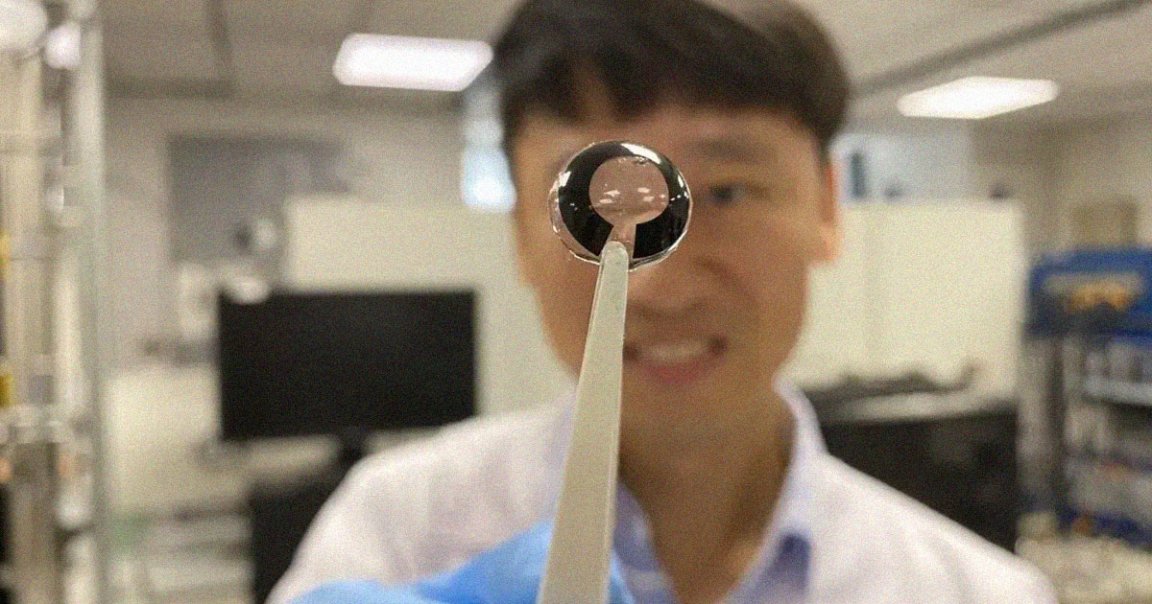
Cry More
A team of researchers in Singapore has come up with a tiny, micrometer-thin battery that can store energy from human tears to power smart contact lenses.
If inventors ever arrive at a viable prototype, a smart contact lens could allow us to get turn-based directions, see notifications, or parse other easily presentable data without the help of an external device like bulkier smart glasses.
But powering these tiny contact lenses has proven extremely difficult. Though display tech has shrunk to an incredible degree, batteries have lagged — presenting a serious issue for smart contact lenses, which have generally required an impractical wire leading to an external power source.
“This research began with a simple question: could contact lens batteries be recharged with our tears?” said Lee Seok Woo, lead author of a new paper published in the journal Nano Energy, and associate professor at the Nanyang Technological University (NTU) in Singapore, in a statement.
Sight for Sore Eyes
The new battery “relies on just glucose and water to generate electricity, both of which are safe to humans and would be less harmful to the environment when disposed, compared to conventional batteries,” Woo added.
The novel, which is thinner than a single millimeter, is constructed using biocompatible materials and features a glucose-based coating, which can react with sodium and chloride ions to generate electricity and power a circuit.
These two elements are also conveniently found in tears, which means the battery could be topped up using the natural resources of the human body.
In an experiment involving a simulated eye, the battery produced a current of 45 microamperes at a maximum output of 201 microwatts — enough to power a smart contact lens, the researchers said.
In short, it’s an elegant solution that could circumvent the need for bulky wireless charging.
“Although wireless power transmission and supercapacitors supply high power, their integration presents a significant challenge due to the limited amount of space in the lens,” said coauthor Li Zongkang, a PhD student at NTU, in the statement. “By combining the battery and biofuel cell into a single component, the battery can charge itself without the need for additional space for wired or wireless components.”
Perhaps unsurprisingly, the tech is still far from entering the mainstream. For one, the tiny battery can only be charged and discharged 200 times.
However, the team is already working with contact lens companies to eventually bring the technology to market.
More on smart contact lenses: Startup Shows Off Working AR Contact Lens You Can Actually Wear